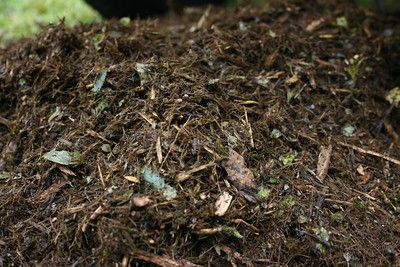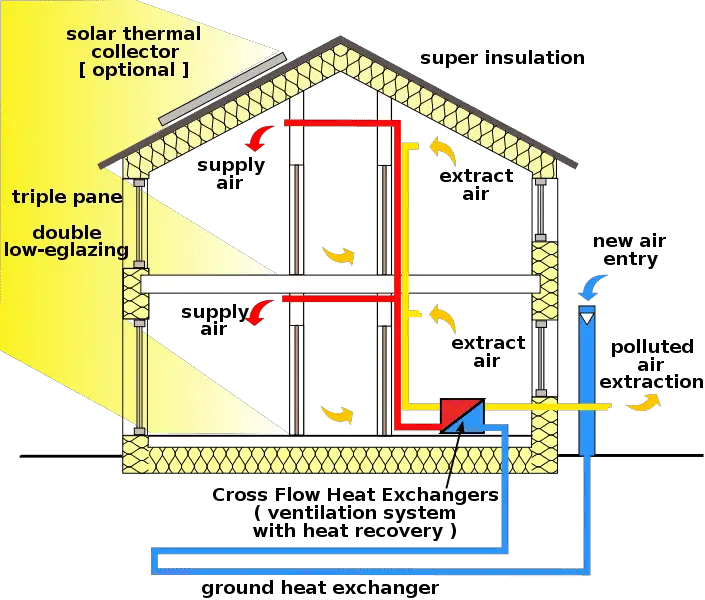5 Causes of Agricultural Pollution and Their Attributes Explained
Causes of agricultural pollution are; excessive chemical application, crop and livestock pathogens, on-farm combustion, untreated wastewater discharge, and agricultural soil erosion.
This article discusses the causes of agricultural pollution and their attributes, as follows;
1). Excessive Chemical Application (as one of the Causes of Agricultural Pollution)
Excessive chemical application in agriculture, is the overuse of chemical substances that are meant to optimize the health, productivity and growth of soil, crops and livestock.
Environmental issues associated with excessive application of agricultural chemicals, are fairly common, especially in commercial farming. This is because there are various factors that determine the optimal amount of chemicals to apply to soil, weeds, pests, or livestock feed (that is; pharmaceutical chemicals).
It is generally difficult for commercial farmers to draw a clear lime between adequate and excessive usage of productivity-enhancing chemical products on the farm; since these products are capable of boosting short-term yield.
The reason why excessive agricultural chemical-application is a huge threat to agro-ecological sustainability, is because its social, economic and environmental impacts transcend the boundaries of the farm, and influence external environments such as non-agricultural lands, adjacent terrestrial biomes (forests, grasslands), and aquatic ecosystems.
This is obvious in the effects and examples of agricultural pollution that include eutrophication; a condition resulting from the leaching, erosion, transport and deposition of agricultural chemicals in water bodies [3].
Excessive chemical application can make soils toxic, and can also degrade air quality in affected areas.
Air pollution by excessive agro-chemical application may occur during the application process, by wind-dispersal of fluid from spray-nozzles; or by the volatilization and evaporation of chemicals in soil.
Two examples of agricultural chemicals that may cause water pollution are;
1. Pesticides like insecticides and fungicides
2. Fertilizers
Pesticides contain persistent organic compounds like heptachlor and aldrin [5], which are toxic and harmful when they accumulate within a medium or environment.
Nutrients in agricultural fertilizers (like phosphorus and nitrogen) can cause pollution, as well as unnatural growth of algae and pathogenic microbes.
Agricultural pollution by chemicals can be addressed simply by limiting the use of such chemicals. This can be done through adoption of sustainable agricultural practices like composting and biological control.

2). Crop and Livestock Pathogens
With respect to agricultural pollution; the term 'crop and livestock pathogens' does not refer strictly to harmful microbes that cause diseases in crops and livestock; but rather to all kinds of harmful microbes associated with farm activities, organisms, products and waste.
A particularly-potent source of pathogens that contribute to agricultural pollution is biomass, because it serves as a source of nutrients to thee organisms.
The biomass may be in form of dead farm animals, manure, crop residue, or agricultural (food) products.
As these forms of biomass undergo decomposition or biodegradation; they facilitate the growth of several pathogenic organisms; example of which are; Escherichia Coli (E. Coli) and Salmonella spp., found in livestock manure [4].
Pollution occurs when the pathogens are introduced into a previously-safe medium; such as a body of water. This can occur if waste from farms and other agro-facilities (like biorefineries) is mismanaged, and disposed without treatment.
It could also be a consequence of the transportation of manure from agricultural lands to adjacent areas, in runoff.
Water bodies that become infested with pathogens from agricultural sources, are unsafe for domestic and some non-domestic purposes. Consumption of such water can lead to gastrointestinal ailments in both humans and lower animals [2]. Microbe-polluted water is also unsafe for irrigation purposes.
3). On-Farm Combustion (as one of the Causes of Agricultural Pollution)
As the name implies, on-farm combustion is the act and process of burning materials on farms, or in agricultural facilities.
It is a major factor behind the link that exists between agriculture and air pollution.
There are various kinds of materials that can undergo combustion within the context of agriculture.
One of these is crop residue, which may also be called biofuel due to its organic and combustible nature.
Plant matter could be combusted as a source of energy for heat or electricity generation, on the farm (that is; as a source of usable bioenergy), or as unwanted waste material.
Burning agricultural crop residue can cause the emission of greenhouse gases, particulate matter (PM), ammonia (NH3), nitrogen oxides (NOx) and sulfur dioxide (SO2) [1]; all of which are potentially-detrimental to the environment.
Aside crop residue and waste, energy resources like gasoline can be combusted on a farm to generate electricity that drives tractors and other agricultural equipment.
Beyond the farm, combustion of materials like wood fuel, taken from the farm, can also cause environmental degradation.
4). Untreated Wastewater Discharge
Discharge of untreated wastewater is a common cause of agricultural pollution.
There are diverse forms in which agricultural wastewater may occur. They include manure slurry, water used for cleaning, irrigation, and livestock antibiotic-administration.
Agricultural wastewater usually contains foreign materials like sediments, pharmaceutic chemicals, fertilizer nutrients, fecal matter and pathogenic microbes. Discharging/disposing such water without adequate treatment will transfer these foreign materials from the farm (and the wastewater) into an external medium, which becomes polluted as a result.
Agricultural pollution by wastewater can be a problem in both small and large scales, although its effects are more widespread and severe when it comes from large agricultural facilities.
Installing water-treatment systems is a crucial step toward addressing this problem, alongside other applicable measures like conservative water usage, and enforcement and regulations.
If left unchecked, the consequences of pollution by agricultural wastewater discharge can be severe, and similar to those of pathogenic-degradation.

5). Agricultural Soil Erosion (as one of the Causes of Agricultural Pollution)
Agricultural soil-erosion is a potential cause of pollution because erosion involves the displacement (and subsequent deposition) of sediments along with their biotic and abiotic constituents.
These biotic and abiotic constituents could be toxic or biologically harmful in nature, so that they are capable of degrading any medium in which they are deposited.
Sediments themselves can act as pollutants especially when they occur in suspension in a medium; with their possible effects including reduction of oxygen, thermal pollution, alteration of natural ecologic conditions, and loss of biodiversity.
Ways in which agriculture facilitates soil erosion are numerous, and include; deforestation, land-clearing and exposure, overgrazing, excessive-tillage, nutrient depletion, and unsustainable irrigation.
Land management, soil conservation, and sustainable farming methods like; crop rotation, terrace farming, conservation tillage, contour cultivation and cover cropping; can all be implemented to mitigate agriculture-induced erosion and pollution.
Conclusion
Causes of agricultural pollution are;
1. Excessive Chemical Application
2. Crop and Livestock Pathogens
3. On-Farm Combustion
4. Untreated Wastewater Discharge
5. Agricultural Soil Erosion
References
1). Andini, A.; Bonnet, S; Rousset, P.; Hasanudin, U. (2018). "Impact of Open Burning of Crop Residues on Air Pollution and Climate Change in Indonesia." Current Science 115(12):2259-2266. Available at: https://doi.org/10.18520/cs/v115/i12/2259-2266. (Accessed 24 May 2023).
2). Cabral, J. P. (2010). "Water microbiology. Bacterial pathogens and water." Int J Environ Res Public Health. 2010 Oct;7(10):3657-703. Available at: https://doi.org/10.3390/ijerph7103657. (Accessed 24 May 2023).
3). Carton, O.; Tunney, H.; Daly, K.; Ryan, M.; Kurz, I.; Doody, D.; Bourke, D.; Kiely, G. (2008). "Eutrophication from Agricultural Sources, 2000-LS2-M2. Integrated report." Available at: https://www.researchgate.net/publication/299637642_Eutrophication_from_Agricultural_Sources_2000-LS2-M2_Integrated_report. (Accessed 24 May 2023).
4). Lung, A. J.; Lin, C. M.; Kim, J. M.; Marshall, M. R.; Nordstedt, R.; Thompson, N. P.; Wei, CI. (2001). "Destruction of Escherichia coli O157:H7 and Salmonella enteritidis in cow manure composting." J Food Prot. 2001 Sep;64(9):1309-14. Available at: https://doi.org/10.4315/0362-028x-64.9.1309. (Accessed 24 May 2023).
5). Mansour, S. A. (2009). "Persistent organic pollutants (POPs) in Africa: Egyptian scenario." Hum Exp Toxicol. 2009 Sep;28(9):531-66. Available at: https://doi.org/10.1177/0960327109347048. (Accessed 24 May 2023).





